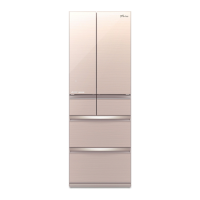
Do you have a question about the Mitsubishi Electric MR-WX52D and is the answer not in the manual?
| Brand | Mitsubishi Electric |
|---|---|
| Model | MR-WX52D |
| Category | Refrigerator |
| Language | English |
Explains the use of non-Freon refrigerant and foam insulation.
Storing daily foods and items not meant to freeze.
Details on upper and lower cases for dairy, fish, and processed foods.
Information on automatic ice production.
Storing frozen food, ice cream, and bread.
Explanation of the control panel icons and settings.
Explanation of warning symbols and their meanings.
Precautions for installation, power plug, and cord safety.
Warnings about electrical appliances, flammable objects, and internal components.
Warnings for usage, malfunctions, long-term storage, and recycling.
Safety during installation, carrying, and food consumption.
Proper placement, ventilation, and spacing requirements.
Instructions for connecting the power plug and electrical safety.
How to adjust supports to level the refrigerator and doors.
Recommendations for securing the refrigerator against earthquakes.
Checking ECO level and setting compartment modes.
Initial cooling period and potential odors or heat.
Step-by-step guide to set Supercool chilling mode.
How to cancel settings and troubleshoot panel touch problems.
Shelves, egg tray, pockets, and partition information.
Storing processed foods and caution about air outlets.
Information on the adjustable separate glass shelves.
How to set and use Supercool chilling for freshness.
Advice on food storage and potential freezing issues.
Identifying parts and initial cleaning/filling for ice making.
Advice on food placement, water type, and ice detection.
How to activate and deactivate rapid ice making.
Comparing ice making times and details about the ice.
Switching modes and adjusting temperatures.
How to set and use Supercool freezing mode.
Step-by-step guide to set and use Hot freezing mode.
Advice on using Hot freezing and its limitations.
How supercool freezing preserves flavor and hot freezing uses.
How to cut various frozen foods without thawing.
Guidance on using compartments for long-term storage.
Tips for preserving food, cutting it easily, and quick meals.
Using frozen fruits for sorbet and general tips.
Items not recommended for supercool freezing.
Recipe for making jam using supercool freezing.
Recipe for making a smoothie with frozen ingredients.
Storing frozen food and ice cream.
Orange LED benefits and moisture retention.
Advice on food stacking and managing condensation.
How to activate, set, and check the ECO level.
Situations where energy saving mode is cancelled.
How to set temperatures for compartments and lower case.
Adjusting temperatures for ice making and vegetable compartments.
Detailed temperature settings for Versa compartment.
How to activate and deactivate rapid cooling.
How to enable, disable, and cancel power saving mode.
List of dry goods and grains suitable for preservation.
Features unavailable and advice for saving power.
Step-by-step instructions for cleaning these parts.
Procedures for cleaning pipe and holder.
Instructions for cleaning the ice tray and its lock lever.
Tips for cleaning the refrigerator and its parts.
Maintenance for power plug and rear area.
Instructions for removing and installing various glass and slide shelves.
How to remove the partition.
How to remove and install pockets and the upper case.
Instructions for removing the lower case.
How to remove compartment cases.
Wiping drip gutters and removing support covers.
Handling power outages, locking the panel, and resetting settings.
How to cancel the demonstration mode.
Understanding door alarms and light indicators.
Addressing persistent alarms and indicator lights.
Steps for storing the refrigerator when not in use.
Step-by-step guide for safely moving the appliance.
Instructions for safe movement to prevent floor damage.
How to enter and set fine temperature adjustments for compartments.
Diagnosing and resolving cooling issues.
Explaining warm walls and fixing food melting issues.
Troubleshooting issues with ice making.
Addressing insufficient cooling or food freezing unexpectedly.
Correcting issues of excessive freezing.
Diagnosing issues in the lower case and soft-freezing.
Troubleshooting condensation, frost, and water issues.
Identifying and resolving operational noises and door problems.
Resolving alarms, panel malfunctions, and indicator lights.
Addressing scratches, holes, warping, and noise interference.
Dealing with smells and detached support covers.
Detailed list of parts and quantities for each model.
Notes on design, servicing limitations, and proper disposal.
Warnings regarding supervision, defrosting, electrical appliances, and refrigerant.
Importance of ventilation, manual transfer, and prohibited storage.
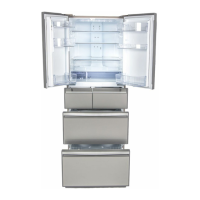
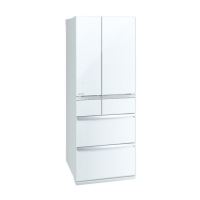
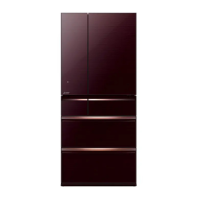

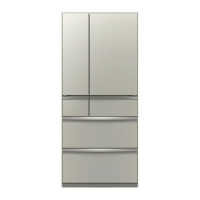

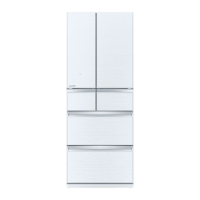
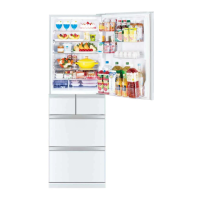
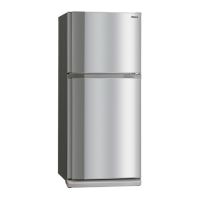
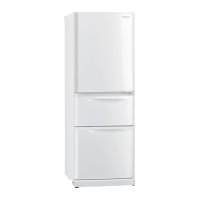

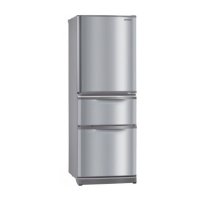
